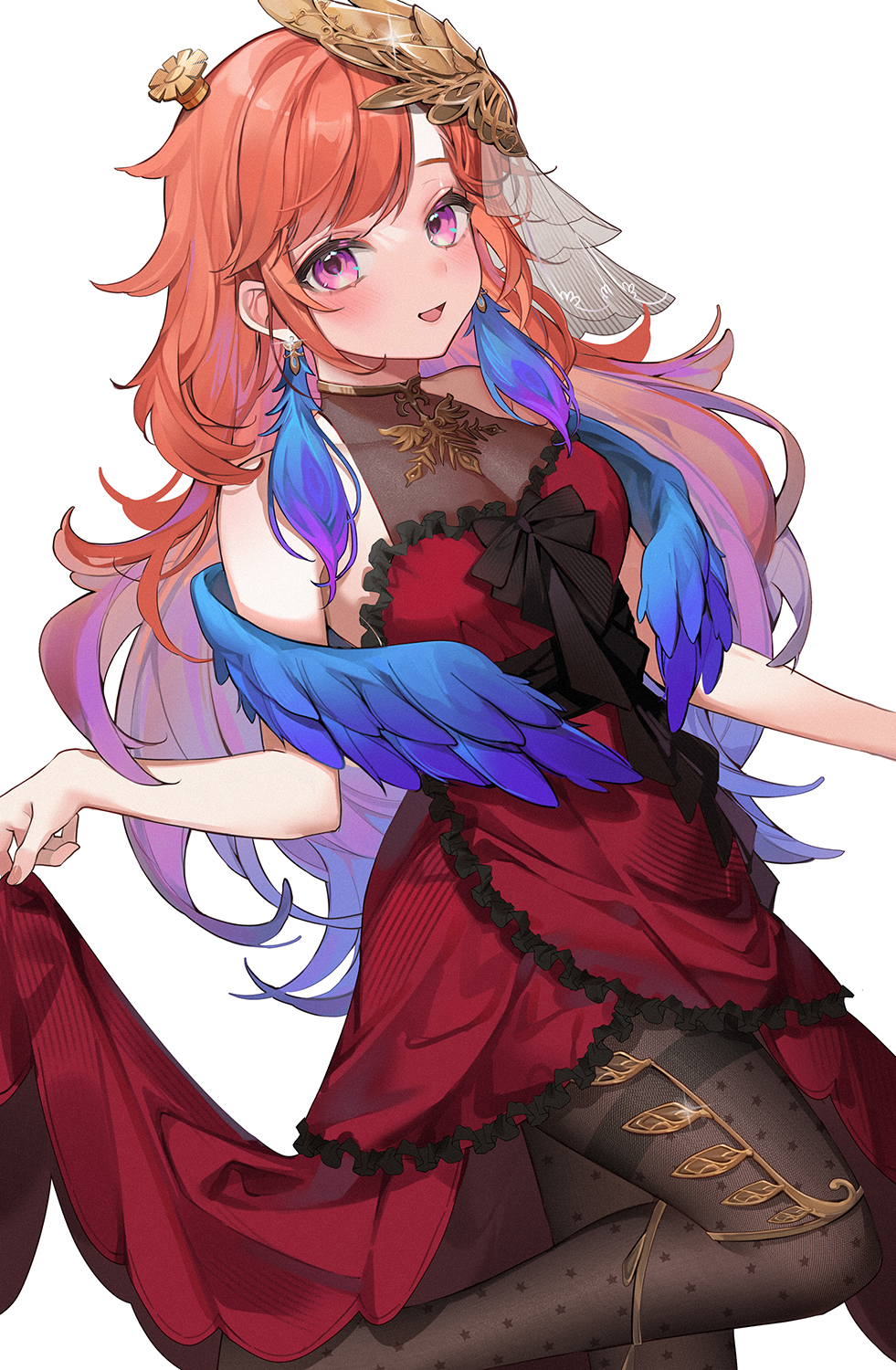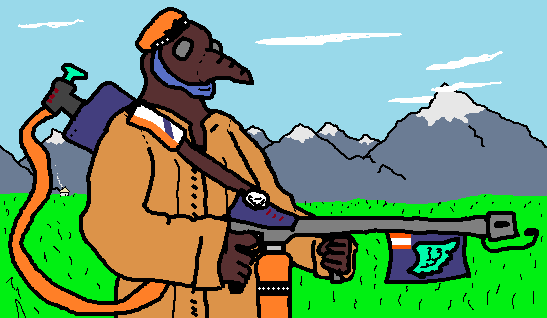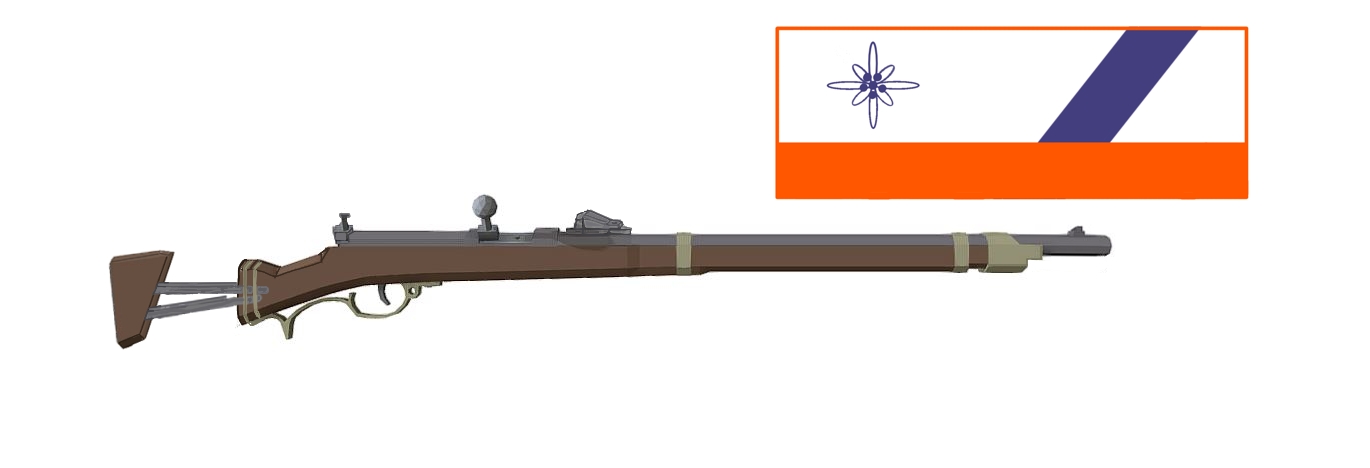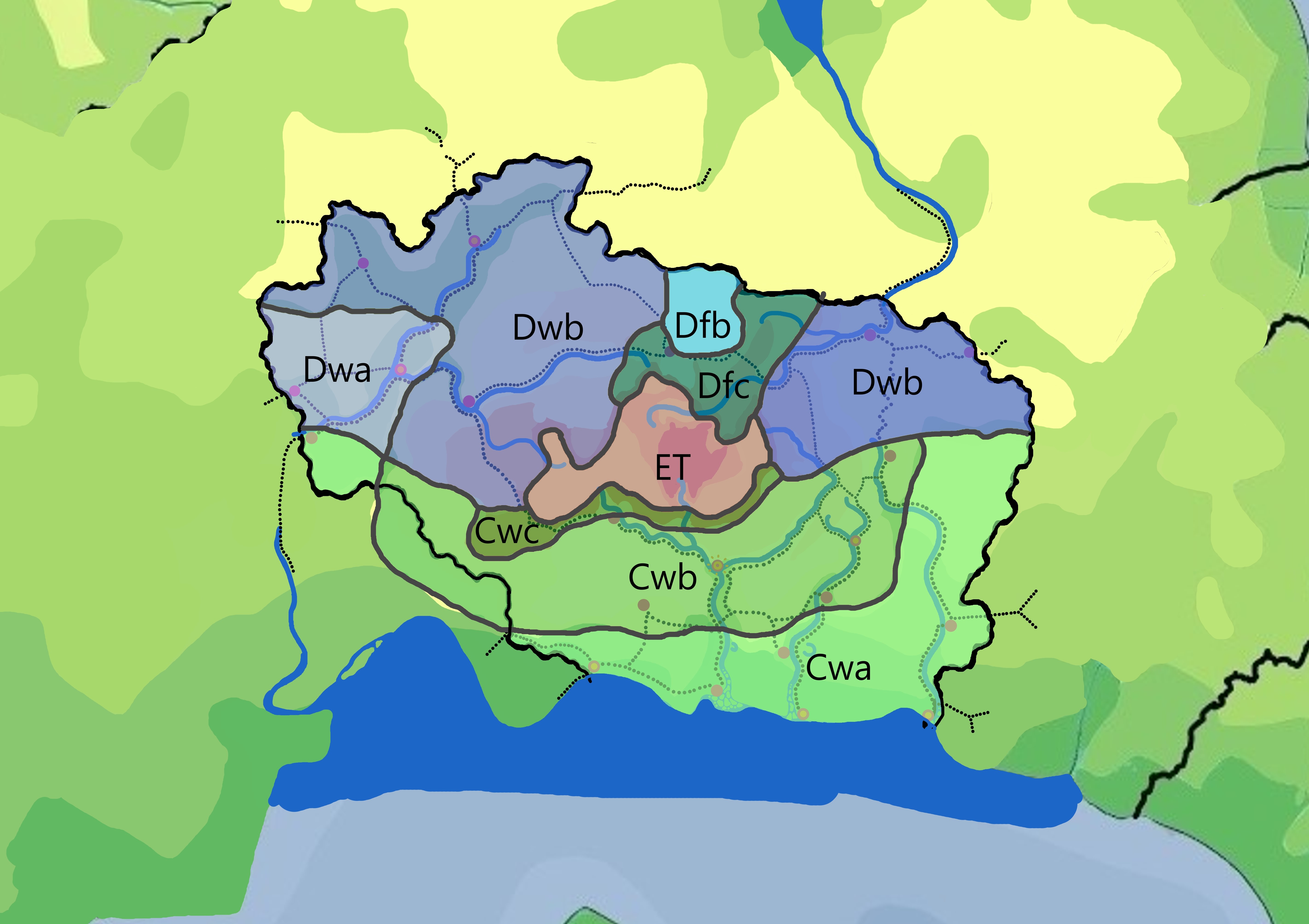Takanashi Kaiserreich Lore

Just from the above, Empress Kiara pretty much always gets both head-of-state and head-of-religion roles in /kiara/ (or whatever we call this split). Her empire is fairly militaristic and slightly prone to expanding beyond it's borders. Military service in her Empress' military is compulsory and everyone has had basic combat training for some reason.
Primary trade with other nations is the rare commodity of soundposts and a rare orange medicine that causes vivid hallucinations and uncontrollable rage in some individuals.
That's all I got.
Kaiserin Kiara is both head-of-state and head-of-religion in /kfp/.
Her empire is moderately militaristic and slightly prone to expanding beyond it's borders into /hlgg/ and the land of the blue bird.
Military service in her Empress' military is compulsory and everyone has had basic combat training for some fucking reason. Ne'er-do-wells are dealt with swiftly and harshly.
Primary trade with other nations is the rare commodity of soundposts and a rare orange medezine that causes vivid hallucinations and uncontrollable rage in some individuals.
The dominant religion of Watch Only Kiara Everyday and You Only Love Kiara dictates that all media must be for the greater good of our idol's plan.
One possible state motto: "A happy chimkin is one with blisters on his wings"
Map

Dress

The typical dress of a Pölitid during all seasons will be a Dirndle for women and a Lederhosen for men, with thicker variants worn with woolen stockings and long coats worn during the winter (or with Drindl's being swapped out for Bunads for the especially cold winters of the highland plateaus) and thinner variants with thin, bordering on transparent, fabric worn over the summer.
Special winged robes are donned for religious events, marriages, and the like, of course. While the more extravagant robes, with silk wings, tend to be reserves for the Fönixids, the Pölitids also done winged robes, albeit with plainer designs, cheaper fabrics, and wings made of plumes of chicken, goose, or duck feathers.
While the Kaiserreich part of /Kaiserreich-FP/ is widely understood, the FP part is less known, standing for Fönixid and Pölitid, the two pseudo ethnic classes of the Kaiserreich.
The Fönixid ruling class of the /Kaiserreich-FP/ possess a rich court culture, having an On season during the Autumn, an Off season during the winter, and a "Holiday" season over the Spring and Summer
The On season over Autumn is when the majority of intrigue takes place, with marriages, court alliances, and the over whelming majority of high societal events, taking place during this time of year. The most famous, or perhaps infamous of which, are the Masquerade balls (which are often preceded, and followed by, orgies) during which members of the Fönixid elite, and even some Pölitids, arrive anonymously wearing masks. No invitations are sent, with the events traditionally being a free for all spread by word of mouth. Any one aware of its happening may simply show up as long as they are correctly dressed. These balls however are not just mere parties of anonymized hedonism accompanied by Waltzes for the participants to enjoy, but serve a vital role, as it is at these balls where almost all of the years political intrigue take place, and are one of the few occasions where the court may talk to the Kaiserin outside of the throne room.
The Off season over Winter serves as a sort of cleanse from the sin and Machiavellianism of the Autumn before it, with it being the time of year where spiritual and religious matters are attended to. Shrines are visited, and nobles done traditional winged robes (see pic related). Marriages arranged during the Autumn have their ceremonies performed, and are subsequently consummated in a more private, wholesome, setting than the animalistic orgies of the preceding season.
while called the "Holiday" season, this is when the majority of the work is actually done. The nobility more casual, loose fitting, attire, and typically deal with matters of law, business, and the military. This is also the season during which the Fönixids descend from their homes in the mountain to the lowlands to meet with the Pölitids most.
KFP Cultural influence: AKA how dirndls becomes cool
While KFP is not typically known for its cultural output, there is something to now about the spread of KFP culture to places outside its borders.
Most significantly the traditional Pölitid dress, the Dirndl
While its not wholly known what the catalyst for this spread is, be it /KFP/ communities holding Oktoberfests in foreign lands during the Orc Schizo occupation of the fatherland, or by men and women finding Pölitid women pretty and wanting to replicate their charms, the first place the dirndl spread to was /Nene/
While the women of Nene had previously donned oriental style dresses with cyan patterned shawls, a trend had began among the wealthier women of Nene to import, and buy dirndls off KFP traders, and even commission them to be custom made with more Nekko sensibilities by Pölitid tailors.
This caused a sort of "Dirndl mania" spread through out Nekko society, to such an extent that even depictions of their goddess changed to reflect the changing culture: even today the Archwife Nene Momosuzu is depicted wearing a Dirndl.
While it became nowhere near as prevalent as it had in /nene/, Dirndls traded across routes taken by /KFP/ merchants eventually reached Noel, where their warmth and comfort made them popular with women in the highland regions of the country, as well as their appeal to the men of the country: they had a percieved innocent, rural, and wholly comfortable and civilian charm to them, which drove the men of the country, largely employed in military natured work for the knights guild that runs the country, utterly wild.
Military

While the majority of splits predominantly use traditional fire arms, the KFP military, or "Orange Berets", while still having "Marksmen Divisions" armed with powder weapons, instead opts primarily to use a more iconic, more cultural significant, weapon; the Feuerschwert
Its inner machinations a closely guarded secret of the Orange Berets, that has been replicated but never truly recreated, the Feuerschwert is an old and storied flamethrower design that has been in use, in its various forms, for what is now nearing 200 years.
Using a thick brownish cocktail containing Ethanol, various sugars, and a list of secret ingredients for fuel, colloquially referred to as "Phoenix Gravy", the Feuerschwert produces a unique turquois flame.
The secret to the Feuerschwerts enduring use however is not its fuel, but rather its pressure: its unique, chambered, firing system which exchanges sustained fire for, in its current iteration, unignited discharge pressures of up to 23 bar, allows it to belch fire balls of turquoise flames up to 46 meters when allowed to attain its maximum pressure.
This pressure allows the Feuerschwert to be relatively effective using virtually any fuel, a famous example being during the 4th Takobell Incident, in which the destruction of an ethanol stockpile forced many divisions in the Orange Berets to resort to using rurally produced Moonshine instead, to shocking efficacy.
Currently over half of the KFP military uses this weapon, with the concession of bringing. While older designs were used alongside a tower shield, the current iterations recoil creates the necessity for two handed operation.
Pictured here is an Orange Beret in protective gear. While the beaked mask is largely obsolete, it is still used for reasons of tradition, as well as its utility in scare tactics.

Since their population is low compared to global players like /morig/ or /inf/, at first kfp doesn’t seem very powerful.
A 2-year conscript service gives access to a large reserve army that can be called on in wartime.
However this isn’t feasible to secure long range trade routes for extended periods of time, let alone project hard power on a global scale.
This initial weakness resonated in their military structure, that is forced to use novel asymmetric and sharp power approaches in warfare.
For example the war ministry can rely on an unusually large logistics and supply corps that focuses on moving large amounts of troops and supplies fast around the country as well as a communications division operating a dense network of semaphore towers for rapid relaying of information from all over the
In general, this resulted in a quality over quantity approach.
Since more than 50% of the homeland is covered in rough mountainous terrain, using it to their advantage became a key cornerstone of offensive and defensive strategy.
As a result the Mountaineer Corps developed naturally from traditions of local hunters and mountaineers.
Recruited from the sons of shepherds and farmers living in the mountains, the men of the corps know their combat environment from birth, in fact, their physiology is already adapted to the low oxygen in the altitudes thousands of meters above sea level when they begin their official training.
A specialized, elite branch of the Army, the mountaineer corps is equipped for warfare in the cold and merciless environment of the snowy peaks and glaciers that cover significant parts of the country.
This potent fighting force is trained in sabotage and asymmetric assault on supplies and troops moving through the harsh terrain for example: setting up ambushes or triggering avalanches.
As a result, their gear must be equipped to deal with the difficult environment they are facing on the daily.
The weather in the mountains is cold and wet and the terrain difficult to traverse. Because of this, traditional flintlock rifles are not reliable enough, because:
a) the firing mechanism is exposed to the elements and can easily fail
b) their long barrels and high weight are impractical to carry or to climb a rock wall with.
The solution was a needle-carbine that offered a protected combustion chamber as well as being significantly lighter than a full-size model. Manufactured in a limited production run in the precision mills of the royal armory, it is equipped with a diopter peep sight and a reduced-weight stock, these guns were effective at ranges of up to 200 meters and could be easily strapped to the back of a soldier during extended climbing.
Pictured is the gun with the shoulderstrap, featuring an alpine edelweiss, a rare and sought after flower growing on exposed limestone rock between 6500 and 9800 feet above sea level.
That is a real flower btw, it is used often in Swiss, German and Austrian alpine symbols as well as their armed forces:
There is a flower known to botanists, one of the same genus with our summer plant called "Life-Everlasting", a Gnaphalium like that, which grows on the most inaccessible cliffs of the highest mountains, where the mountain animals dare hardly venture, and which the hunter, tempted by its beauty and by his love for his fair maiden, climbs the cliffs to gather, and is sometimes found dead at the foot, with the flower in his hand. It is called by botanists the Gnaphalium leontopodium, but by the Swiss Edelweiß, which signifies Noble Purity.
Schizo History
A weak start on the world stage, with the nation emerging as an utterly alien culture to its neighbors, speaking a foreign nasally language no one understood or cared to learn, dressing in flamboyant orange garbs, the early years of the KFP were ones of humiliation and struggle: with few natural resources, and little arable land, there was nothing to kickstart the economy, leading to the country becoming economically dependent on her allies, with the Morigs and the Nousagis being the one who felt shafted by the arrangement most.
What's more, the KFP held a zealous, and deeply heretical religious belief: their Kaiserrin was not just a representation of their gods will, or even a mortal representative of her on the planet of Veetee, but was quite literally the Great Phoenix herself in human form.
Their heretical beliefs, foreign culture, and resentment originating from their economic dependence on others, lead to what is perhaps the worst event in /KFP/ history: The Great Orange Scare.
An Archschizo, nicknamed the "Orcess", descended from the wasteland. Deeply bitter, she believed that it was SHE who should have been a goddess on Veetees surface, and held the earnest belief that ousting the Kaiserrin from power would allow her to ascend to godhood. capitalizing on the hatred of the /KFP/, she mobilized with an army of schizos, and radicalized once normal people from other splits as she went.
Her forces spread out, and attacked the KFP wherever she could find them, with the Kaiserreich itself being put under siege. Eventually, spirits were broken, as Famine and Illness ravaged the country, and in a bid for survival, thousands of KFP picked up and left for the Hlgg heartland. KFP short on people, the Schizos broke through and occupied the split, with what remained of the KFP engaging them in a guerilla. Nearly every KFP remaining served at least part time in the Orange Berets. The country was ravaged by schizos and scorched by the KFP's own turquoise flames
In the Hlgg heartlands things were not much better. The church of the trinity had not taken kindly to their arrival, with the KFP (now estranged from their homeland) being even more zealous in their identity, and prosecuted them, with KFP and Trinitarians often breaking into fist fights on the street. This was made worse when Schizos began entering Hlgg, and under the guise of trinitarians, engaged in a small scale street to street war with the KFP
Back in the homeland, the KFP continued to struggle against the Schizos like cornered animals, striking back at foreigners in their mountains with ever mounting aggression. The Schizos had started covert ops operations and demoralization campaigns against the KFP under the guise of being aid workers from other splits and KFP with legitimate concerns.
However, things began to change. The demoralization had largely failed and had, in many ways, had the opposite effect: Those who remained with the Kaiserrin, who remained with her despite the persecution, garnered her affection, and this affection gave the KFP something to fight for. Each KFP was determined to be the last one by their Kaiserrins side. This was the birth of the #Wolk & #Yolk doctrines. The Orange Berets began engaging in a counter campaign, and eventually break throughs were made. A high general of the Schizos, Baron Kraut Von Eggman, was captured and publicly humiliated in a great mockery ritual, ending with him being shipped to HLGG, where he was publicly executed by blunt force trauma to the skull
Next was the Orcess herself. Frustrated, and driven half insane, by the diminishing gains of her Schizo army and the effects of the KFP's own demoralization efforts, demanded an audience with the Orange Berets. For the first time the Orcess had a serious discussion with the KFP, and her heart was changed. Realizing the error of her ways, she swore to undo the harm she'd done, working to discredit all the false information she had spread during the demoralization campaign she'd started.
While Schizos still remained, they were few, far between, and widely discredited thanks to their own leader having swapped sides. A similar fate met the Trinitarians, who saw increasing in fighting over the nature of the trinity.
In a strange turn of events, the war had helped the KFP economy develop. The sheer bulk of Fire Retardants, Alcohols, prehensile pipes, small mechanical parts, Ethanol and exotic sugars needed to maintain their Flamschwerts and protective gear during the war had lead to them becoming the worlds leading producers in all of them. Something the KFP would capitalize on post war, when the at the time blooming tech economy of Infinity Island saw an explosion in demand for these things. While Infinity would soon over take the KFP in terms of small parts manufacturing, the standard minute pinion used in most infinity clockwork is still the same as used in the Flamschwerts trigger mechanism.
Cuisine
The center of all KFP cuisine is, unsurprisingly, Chicken. This hardy jungle foul, introduced to KFP first by traders from /MEP/, this birds meat is present in nearly all KFP dishes, from Lasagna to Sausage. While chickens more similar to the ones originally from Mep are kept in the lowlands, the taste of KFP chicken instead comes from the white feathered variety raised in the Highlands, with its softer, spongier, meat and more mild taste. Using the chickens meat as a base, sauces are added.
KFP Cuisine is unique for its extensive use of foreign ingredients: Pineapple imported from /GGG/ and /Mep/, Kronii Cheese from Infinity Island, and Flare Chilies from Bakatare, Even Watamelons from the Watamelon republic, are all common occurrences.
Food is perhaps the most uniting cultural factor in KFP, second only to the Kaiserin, as while the Fönixids and Pölitids may look different, work different jobs, and wear different clothes, they are united by all eating the same unpretentious Chicken based meals. The most influential of Fönixid nobles and a simple Tyrrhön Göshtling from the lowland docks may sit down and enjoy Phoenix burger together without either feeling like they are eating above, of below, their class.
Phoenix
19973036
KFP are humans, however they do raise a unique breed of especially fat white feathered chicken. Perhaps having Phoenixes be a species of brightly colored bird native to the mountain forests of /KFP/ could be really cool though and I am totally stealing that yoink thanks for the idea dude.
19968496
Actually we're already sort of trading Phoenix feather to infinity, so I should probably flesh out Phoenixes a little.
Phoenixes are a species of omnivorous gamebird native to the mountain forests of KFP, comparable to a vulture in size. While capable of it they are poor fliers and spend the majority of their life on the ground, using their wings largely to assist in jumping and sparring.
Their poor flight is attributed largely to their feathers being coated in a unique wax. Phoenix wax is flammable, and burns slowly, producing a distinct turquois flame. A Phoenix is capable of igniting this wax at will using a unique set of electricity producing organs at the base of its beak that produce a small electric spark when flexed. To put itself a phoenix will simply stop producing wax and let the flames die down, however this doesn't always work and it is not uncommon for a phoenix to die from heat exhaustion simply by being on fire for too long.
Phoenixes largely use their self immolation as a display of good health towards mates, however it has also been seen to be used to scare off predators.
Despite being a bird with little flying ability they have no natural predators due to their large size, sharp beak, vicious claws, and horrifying ability to self immolate at will
Phoenix commodities
Phoenixes, despite their fierce nature and relative scarcity, are in fact farmed, although very scarcely: there are few phoenix farms (12 located in across /KFP/, with one more located a little over a mile across the border in Duck)
Phoenixes are farmed mostly for their feathers and wax, which both possess unique and sought after properties. Phoenix meat is rarely consumed due to its price and it being taboo to do so: in KFP consumption of Phoenix meat without the Kaiserin's expressed consent is legally recognized as an act of treason. However it should be noted that Phoenix meat tastes incredibly good, tasting like chicken with a distinct citrusy, cinnamony, undertone
Phoenix feathers are highly in demand for their flame retardant properties and distinct orange coloration. Phoenix feather barb is often cut off, dipped in alcohol to dissolve the wax off it, then woven into a fabric to fire proof it. alternatively feathers are sold simply as expensive decorative items, however this is less common.
Phoenix wax is typically dissolved in small masses of ethanol, producing a 50% ethanol 50% wax mix. This sticky fuel, often called phoenix oil, is used across KFP for everything from lamp fuel to firework dye.
Phoenix wax can also be refined and compressed into dense orange cubes, called the Kaiserin's butter. These are, however, highly volatile and expensive, and are rarely (if ever) used outside of the military, where it is are packed into cannon balls to act as incendiary.
Religion

While many nations have their head of state as their religious leader, acting as a representative of their high deity, in /KFP/ the Kaiserin is not just as a representative of Kiara, but as Kiara herself.
While days can be spent debating and mulling over the strange, and potentially heretical nature of /KFP/ religious doctrine, what's more interesting, and perhaps less discussed, is the way the KFP's practice of having a God Queen impacts their rituals and religious practices.
As the Kaiserin is quite literally a god on earth, religious rituals are considered perhaps less important than they are in other countries, and are practiced largely as matters of culture or for reasons of self fulfillment, as performing rituals to speak to the goddess seems largely redundant when you can, and as is often the case in fact HAS, seen or even spoken to said goddess in person.
Shrine visits, typically performed over the winter, are done to typically to cleanse oneself and "Cool Down". Typically in wake of the wild and unadulterated sin that takes place of the Autumn.
Simple robes with decorative wings are worn around shrines, which the KFP will stay at for two days living a simple life with the maidens who tend to the shrine, meditating, before receiving their fortune, bathing in a nearby hot spring and returning to their normal lives.
Winged robes are also adorned during marriage, which are performed at the same shrines. While all guests are present for the marriage ritual itself, during which a chicken bones is typically crushed for good luck, the newly weds will stay the night at the shrine at the shrine, before leaving the next morning.
The newly weds stay within a special, secluded, chamber at the very back of the shrine, where they are expected to consummate their marriage. While it is typical to have a shrine maiden present to "assist" in the love making, either due to it being move newly weds first time, or simply to satisfy the perversion of either the husband or the wife, it is not abnormal for the maiden to be dismissed to give the couple privacy.
/KFP/ funerals however are done "viking style", in which a KFP will be place upon a boat with a pyre upon it onto a body of water. The pyre is then lit by flaming arrow. While a lake is preferred, this is typically reserved for the wealthy and high status due to its cost, with the majority of /KFP/ being cast out into the ocean instead.
Finally, the most looked forward to of religious practices, visiting the Kaiserin to receive her blessing
Every KFP is expected to do this once in their life, with even KFP living outside of KFP territory making pilgrimage back to their ancestral homeland to visit the Empress. This is typically done during the summer, as this is when conditions up the mountainside are safest.
A red envelope is filled with a 100 Reichsmarks, and a message for the Kaiserin. The KFP in question will then bring this envelop with them along a pilgrims path that leads from the costal lowlands all the way up to the highest point of the Kaisereich, the peak of Mount Bird, where the Kaiserins Palace, and throne room, are located. Unlike other rituals, no special garb is worn, and instead the KFP is expected to arrive in their everyday clothes.
Upon arriving, the KFP will present the envelope to the Kaiserin, who will open it and read the message enclosed. She will then discuss the contents of the message with the KFP, speaking to them personally. IF the message is blank, or is too short to be made conversation of the Kaiserin will chastise the KFP for this. Finally, when the conversation is deemed finished, the Kaiserin will kiss the KFP, and send them off to travel back down the mountain.
Climate

Climate and seasons:
/kfp/ can be roughly divided between 2~3 major climate zones.
Coastal area south of the mountain, as well as the southernmost part of the northwest valley, is mostly subtropical/temperate monsoon, with the southern slope of the mountain getting steadily colder as altitude increases. Snow will be uncommon outside the highland bordering the alpine tundra.
In the coastal area (Cwa), summer will be hot and wet, and winter cold and dry. As altitude increases (Cwb~Cwc), the temperature difference between seasons will reduce, becoming an "eternal spring" climate where seasonal difference is primarily rainfall.
Inland area north of the mountain is mostly continental monsoon. It has the classic four-season climate, with significant rainfall during the summer months. The higher area north of the mountain is consistently dry all year due to the small rain shadow effect of the mountain, and its altitude also renders it colder.
Around the summit of the mountain (altitude above 2500~3000m), the weather becomes consistently cold and most trees can no longer develop. Patches of cold-resistant and/or clonal trees might persist, but the landscape will be mostly hardy grass and moss.
Natural biome:
Before civilisation, the majority of /kfp/ lowland temperate broadleaf forests. The southern coast might be considered temperate rainforests, while the northern area gradually transforms into mixed broadleaf and coniferous forest as temperature decreases. In continental climates, land at higher elevations and far from sources of water (primarily rivers) will be temperate grassland more suitable for animal husbandry.
Common hardwood in /kfp/ forest includes ash, beech, chestnut, elm, hickory, oak; common softwood includes cedar, fir, pine, and spruce.
Productive climate and generally favourable soil quality (lime and fertiliser might be needed) mean the majority of land in /kfp/ will be suitable for intensive agriculture. Wheat, maize and millet are generally suitable for all lowland areas, while the south is also suitable for rice growth, and the north is suitable for more cold-resistant foodstuff like barley and oat.
Examples of common non-food crops in /kfp/ include beet, groundnut, basedbean, tea (in the southern highland), peaches, pear, apple, cotton (in the south), flax, and tobacco.
Miscellaneous thoughts:
In general, the environment is most similar to a somewhat warmer southern Central Europe (northern Italy, Austria, and Southern Germany), or a more hilly Midwestern United States. Subtropical highland does not exist in Central Europe or the Great Plains, but is present in the southern Himalayas or southwestern China.
The map does not show any ice caps in /kfp/, although you might get some icy summits if the main mountains above ~4000m.
/kfp/ have two main areas that would be able to support large-scale agriculture and thus a large population and government (circled in purple in the previous post), separated by mountains and different general climates. Do they have different cultures before becoming part of the same country? Do they prefer to have their own government?
The eastern river splits into two rivers, which natural rivers don't really do. I suggest that it is artificial instead, maybe with a short canal connecting the two rivers (circled in red in the previous post). Perhaps it was originally used to transport agricultural products from the east westward?
Subtropical highlands will experience intense rainfall during the wet season. Since most of the rivers originating at the south slope of the main mountain drain into the same river south of the capital, the riverbanks will be seasonally flooded, especially near the estuary where the terrain no longer constricts water. A side effect of this is that the riparian wetland will become very fertile farmland once the wetland is drained and protected by dykes. Indeed, this might be one of the practical reasons why the capital is built immediately north of it - to control the downstream breadbasket while not as subjected to the flooding.